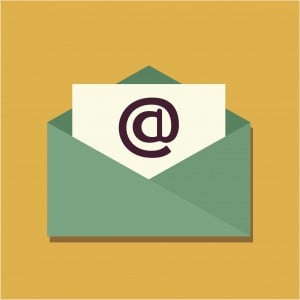 Managing your inbox and responding through email can be a very tedious task. In fact, a lot of marketers set aside part of their daily routines just to tackle their email. Perhaps what takes the largest amount of time is responding to important contacts, including emailing leads or potential business relations.
Managing your inbox and responding through email can be a very tedious task. In fact, a lot of marketers set aside part of their daily routines just to tackle their email. Perhaps what takes the largest amount of time is responding to important contacts, including emailing leads or potential business relations.

Writing up a large number of emails can be very time consuming. What’s even worse is when you have to send the same email or a similar response to a large number of contacts. You cannot just CC a bunch of people and send out a blanket email because a lot of your contacts or leads would find that disrespectful. Taking that point one step further, you don’t want to tip off competitors to potential leads if they are CC’d in the same email.
One way to speed up the whole process is to come up with an email template, or what’s sometimes referred to as an auto response. Of course, you won’t actually be using it like a traditional auto response because you’ll be sending it yourself.
It can be difficult to produce an email with a template that actually sounds human, though. You don’t want your contacts to know you’re just sending out a copy-and-pasted message. In the world of marketing, it’s very important that you give contacts the illusion they matter to you. There’s nothing that says they matter more than taking the time to draw up a personalized email or response. Robotic- and monotonous-sounding emails are not going to cut it in that respect.
How to Build a More Natural Template
The best way to build a more natural-sounding email template is to use what I refer to as “cues.” Essentially, it involves leaving tags or personal cues in a template, which reminds you to fill out the necessary information. For example, a cue might include the opening line of “Hey [NAME].” The cue there would be [NAME], which conveys the need to replace that with the name of the person who will be receiving the email.
For example, here’s the beginning of a template I used to pitch a motion graphic I promoted recently, called The Economics of Drug Abuse:
Hey [NAME],
I’m a huge fan of your work for [PUBLICATION]. I recently read your piece on [RECENT ARTICLE TOPIC RELATED TO MOTION GRAPHIC] and I completely agree. [BLURB ABOUT CONTACT’S ARTICLE]. As a matter of fact, I recently put together a video about how much money America would save if we were able to rehabilitate all of our current drug users. Check it out: http://www.12keysrehab.com/blog/economics-of-drug-abuse-video
The video shares some surprising statistics about the cost of drug addiction. Especially with all the attention being given to healthcare in the U.S. right now, it’s sure to cause a stir! If you’re planning to cover this story, this video would serve as a great visual explanation.
As you can see from the template example, there are plenty of cues that beef up the email response and make it much more attuned to the reader. The words in all caps serve as personal cues, highlighting which words and phrases should be replaced with more personalized content.
Using a template like this not only speeds up the entire composition process, but it also allows for more natural-sounding responses. Templates can be used for any kind of email, and the best part is that you can draw up numerous versions pretty quickly.
Quick Tip: Undo an Email Boo-Boo
If you make a mistake while composing an email, or you send along an unfinished template by accident, fear not! There is a way you can reverse the process and stop contacts from getting the message.
Believe it or not, Google still has a few of its Google Labs experimental options kicking around, even though it discontinued Labs in 2011. Most of the related options work just fine, but they are disabled by default because they may cause unnecessary issues or they’re tailored for more adept users.
There is a particular option that allows you to cancel the send action by deleting a message you already sent. To enable “undo send” for future emails (sorry, your past mistakes are already done!), do the following:
- Click the gear symbol in the top right corner of the Gmail menu.
- Choose the “settings” option.
- Click the tab labeled “labs.”
- Scroll to the “undo send” option and click the radio button labeled “enable.”
- Scroll all the way to the bottom of the page and select “save changes.”
Once all that is done, click the gear icon again and navigate back to settings. Look for a new option labeled “undo send,” which should appear under the “general” tab. Configure the amount of time you would like to have to undo a sent message, and that’s it.
From now on, if you make a mistake and send an email too soon, you can just undo the action. Just be sure you undo it quickly enough!
Email Templates